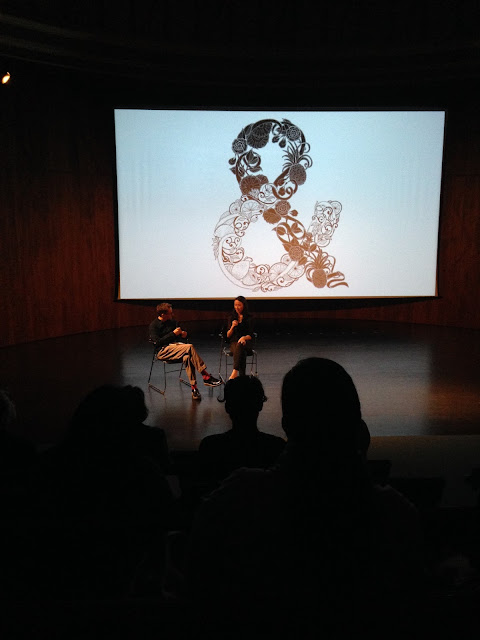The Secret Garden book cover
We were asked to design a book cover using a shadow as the
primary feature of the design. I chose to illustrate the cover of the book "The
Secret Garden" by Francis Hodgson Burnett. The book is about a lonely
child, Mary, who finds solace in a secret garden she discovers in the home of her
extended family where she is sent to live when her parents die in the
early 1900's.
I looked on Amazon at different book covers for the book, and at different ways of using shadows.
I also investigated artists who use shadows, and remembered seeing a BBC documentary about Tim Noble and Sue Webster who create sculpture installations from found items which look like nothing until light is directed at them from a certain angle, and the shadow created can be seen (see below). It works because the resulting shadow is so surprising, and it is fascinating to think about how it is actually produced. It also makes a statement about waste and what we throw away in Western society, and how what one person sees as rubbish can be reused.
Youngman (
http://www.timnobleandsuewebster.com/youngman_2012.html)
My idea was to use shadows in a positive
way to symbolise light, warmth, and a new day. I wanted to use a keyhole
surrounded by darkness, and when you peer through it you can see a
sunny yellow garden and a long shadow cast from the swing in the garden.
Swings also represent childhood and joy. My initial ideas are shown as thumbnails below.
I then looked on Google at different ways of drawing a swing - rope swings and frame ones, tyres and wooden seats. I wanted the design to look quite graphic with lots of contrast.
I was particulary inspired by this image (
http://www.katespapercreations.com/2014/01/3d-shadow-box.html):
My idea was to update the cover to appeal to a more modern audience, but still retain the Edwardian feel of the novel, so I chose a cursive script to relate back to those times when children were taught to form letters in a standard way and everyone's writing look the same. I found lots of examples on dafont.com which were suitable
http://www.dafont.com/theme.php?cat=602&page=3&text=The+Secret+Garden.
Initially I thought I would use Illustrator to draw the keyhole shape and add the photo of the swing and shadow in the hole, but decided to try to photograph the keyhole and swing together. I created a rough mock up of the keyhole shape cut from card (in 2 sizes) and the swing (card, waxed string, twig from the garden), to ascertain that the sizes were roughtly correct, and took some test shots. As these sizes worked, I then cut the keyhole from black card and experiemented with the positing of the light to cast an effective shadow. I tried to get the shadow to appear non-threatening and cheerful and evoke a feeling of warmth and sunlight.
My "studio" setup:
The swing and branch:
Some of my final shots before processing in photoshop:
I used a wide aperture (F2) to get the keyhole blurred but the swing in focus. The lamp was adjusted to make the shadow appear soft and less threatening.
Yellow was chosen for the only colour, because of it's connotation with sunlight, happiness, warmth and protection - the feelings that Mary has when in the Secret Garden.
I created several versions of the cover:
My favourite are the bottom two. However, I do quite like the top right design as it looks quite Penguin-esque. On the bottom left, I like the black and white with the bright yellow and the handwritten script. The typeface brings a more modern and friendly feel to the novel, and the yellow keeps the image from looking sinister. The bottom right cover has a photo of old script overlaid (suggested by Gemma!), and works well to bring another layer of interest and makes the image look more sunny. It contrasts well with the sans serif font, but the style of text could make the subject matter seem, incorrectly, for an older audience.
I made one final book cover which I think is the best because the typeface is friendly, but hints at a time when handwriting was more calligraphic, the yellow is sunny but not too orange, and the placement of the title is informal. The author's name at the bottom is in Times New Roman which is easy reading for its target audience, but contrasts well with the title typeface. The white type looks interesting against the black and yellow. I think this is the best (of my covers) of a design which juxtaposes a shadowy photograph with a friendly feminine typeface, preventing the design from appearing ghostly.


















